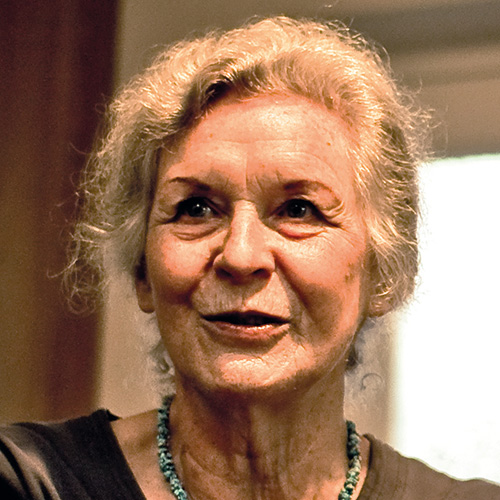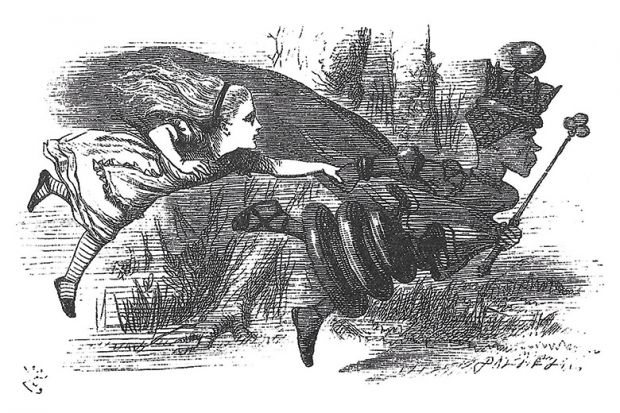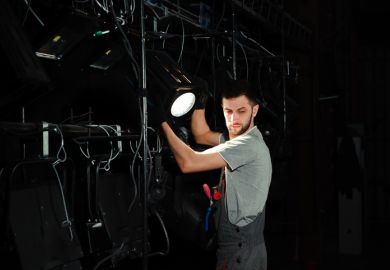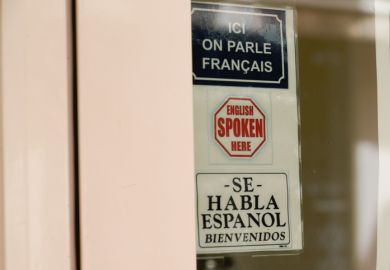“There is always something else, something other, to say about Alice.” (Alice in Space)
For generations of readers and critics, Lewis Carroll’s Alice books have proven irresistible – literary historians, theorists, linguists, mathematicians and philologists have all weighed in – but I don’t think it would be an exaggeration to say that no scholar has been better equipped to bring her expertise to bear on these books than Dame Gillian Beer, the woman who brought us Darwin’s Plots: Evolutionary Narrative in Darwin, George Eliot and Nineteenth-Century Fiction (1983) and demonstrated the fruitfulness of bringing a deep understanding of Victorian scientific culture to bear on the literature of the period.
Alice in Space has been a long time coming. Beer was describing it as her “next book” more than a decade ago, and lovers of the Alice books and Victorian literature more broadly have been given tantalising glimpses of what might be in store. Hints of the eclectic approach of this study gleamed in early versions of “Alice in time”, the first chapter of the book, which appeared in 2011. Her “Must a name mean something”, a version of another chapter, was published in a collection of essays edited by Andrea Matucci and Simona Micali in 2010. Above all, the way has been prepared through talks given at a variety of literary festivals and universities to a wide range of audiences.
The book unfolds less as a set of chapters building a cumulative scholarly argument than as a series of meditations on loosely related themes: “Games, play, and maths”, “Puns and parody”, “Dreaming and justice”, “Growing and eating”. As such, its character is rather different from that of most academic studies. There is no sensation of relentless argument, no sense of urgency to share a radical discovery that might transform a field or a critical paradigm. It is instead a book that is in no hurry, nor should its readers be. It is a book to savour, to linger through and to relish as much as its author clearly savours, lingers through and relishes the breadth and depth and complexity of her understanding of the Victorian culture that formed both Carroll’s and Alice’s milieu. As Beer comments in her introduction, “My study explores the Alice books at close hand and also looks through their lens to understand more of the ideas by which they were surrounded. Discussions among language-theorists, mathematicians, logicians, writers of philosophical dialogues and pedagogic works, philologists, photographers, parodists, and contributors to Punch all fuel the fireworks of these texts. So too, turned awry, do the domestic pleasures of croquet, tea parties, picnics, and singing.”
Beer’s discussion returns repeatedly to ideas of dialogue and conversation – of Carroll with his contemporaries, whether scientists or writers, of Alice with the extraordinary characters she meets in Wonderland and Looking-Glass Land, of Alice with herself as she gauges the stability of her identity as her body undergoes the host of changes that Wonderland produces, and of narrators with their readers. As Beer notes, “Parody, language theory, the hauteur of insider communities, the difficulty of imagining ways of being other than our own: all these are at play in the scene of the live flowers. And they are at play too: Lewis Carroll has an extraordinary ear for the free intricacy of conversation.”
It is a lovely phrase – “the free intricacy of conversation” – and might well stand as a description of Beer’s own style. Reading Alice in Space is like participating in a marvellous dinner party conversation as the author moves freely and easily among the intricate interrelationships of Victorian culture. When Beer turns to the 19th-century understanding of dreams, Byron is put into conversation with Charles Lamb, G. H. Lewes, Thomas Moore, George MacDonald, and Ruskin’s friend Arthur Severn (who corresponded with Carroll). The Bon Gaultier Book of Ballads rubs shoulders with Anthony Trollope’s magazine St. Paul’s and William James’ The Meaning of Truth.
My favourite moments come when Beer unexpectedly addresses a remark directly to her own readers, as she does parenthetically in this discussion of etiquette: “The discourses of acquaintance and of consumption are confused. Alice must not ‘cut’ – refuse to recognize one to whom she has been introduced (think back to idyll of the fawn and Alice who are temporarily free of all vestiges of such social and species-exclusion).” There is something touchingly intimate in this gesture to our shared familiarity with Alice and her adventures, in the friendly prompt to make the connection if we haven’t already done so.
Similarly rewarding are those free and intricate moments when she nods indirectly to a wider shared readerly experience, as she does in this slightly tart aside regarding character: “The Mock Turtle, though introduced to Alice as a soup ingredient, turns out to be not just a ‘thing’ but a being with a very full and piteous ‘history,’ told over several lachrymose pages as if he dwelt in the leisure of an eighteenth-century novel.” Reader, I laughed aloud – who in this life has not been at some point the recipient of such a “piteous ‘history’” or thought while reading some extended tome “when will this end”? From this point forward I will only be able to describe such tedious speakers as dwelling “in the leisure of an eighteenth-century novel”.
Beer appeals repeatedly to such shared readerly experience – we might not inhabit the worlds of Victorian science or philosophy or philology as comfortably as our author, but we are likely to have a long history with the object of her textual enquiry. Alice in Space is above all about what it means to be a reader of the Alice books – to encounter them for the first time, and to have read and reread them over time. Beer imagines the experience of both the child protagonist and the child reader for whom written language is as yet unstable and slippery: “The puzzlement of Alice, and the triumph of Alice, are attached to her newly acquired skills as a reader. Words spring to life, jostling, unruly, looming, then brilliantly sealed and skeined into ordered sentences. The primary constituency of child readers for the Alice books does not imply simplicity – rather, struggle, loneliness, pleasure, and sometimes success, the flair of meaning pinned down, or released.”
She similarly recognises the varieties of readers in addition to children who encounter the books: “These multiple, simultaneous implied readers together produce curious sonorities and harmonics in the text. They intervene in, or are assimilated into, a secret conversation with the author, a sense of privileged extra space for thinking that makes for much of the fun in the works.”
The one conversation that is not entered into, the one space that is not explored, is that related to sexuality and speculations about Carroll’s relationships with children. Beer dismisses this as a topic of discussion on the first page, asserting that the books “have also come under the sway of an eroticising process that speaks to our current needs, while the original texts find freedom by eschewing awakened sexuality. Alice…is lodged in a period of latency.” The ground rules are laid – we will enter into a wide-ranging discussion, but we will not go there. Later in her study, Beer proclaims adamantly that unlike his contemporaries working in fantasy, Carroll rigorously avoids questions of sexuality in Wonderland: “MacDonald and [Arthur] Hughes together explore anxieties that are excluded from the Alice books. These books do not encompass tragedy or sexual passion; they light up life through jokes and curiosity, through eagerness and oddity, and through the hopefulness with which Alice explores all forms of knowledge by which she is surrounded.” But not quite all knowledge. That’s for another conversation.
Shelley King is professor and head of the department of English language and literature, Queen’s University, Canada.
Alice in Space: The Sideways Victorian World of Lewis Carroll
By Gillian Beer
University of Chicago Press, 240pp, £24.50
ISBN 9780226041506 and 6404790 (e-book)
Published 28 November 2016
The author

Formerly the King Edward VII professor of English literature at the University of Cambridge and now emeritus professor there, Gillian Beer was made a dame in 1998.
She was born in Little Bookham, Surrey, and during the war lived in the Somerset countryside, “which meant that we could roam freely because there were almost no cars on the road. I was an only child and my mother was a single parent, so we talked a lot to each other and walked the lanes and hills.
“I always read voraciously and borrowed from the county library in Taunton. But I wasn’t particularly bookish.” As an undergraduate at St Anne’s College, Oxford, she recalls, she was “ambitious, gregarious, passionate, musical”.
What does she remember of her first exposure to the Alice stories?
“I had a copy of Alice’s Adventures in Wonderland for my sixth birthday with illustrations from the Paramount film but I didn’t quite take to it (although I still have the copy now). I think the tease-culture in it frightened me. I discovered Through the Looking-Glass when I was seven and was completely enthralled – why the contrast in my first reaction to the two books I don’t know: perhaps I was just a year older, or perhaps I was heartened because Alice could sometimes foresee what would happen, with the aid of nursery rhymes that I knew too.”
Alice in Space, Dame Gillian says, “was written over a long time and kept growing. It started out as three lectures at University College London and the University of Chicago, but the more 19th-century writing I read that wasn’t Alice, the more ideas she prompted.”
During her time at Cambridge, Alison Richard served from 2003 to 2010 as its first female vice-chancellor. Richard was, Dame Gillian recalls, “a stalwart supporter of gender studies and interdisciplinary work, and her presence certainly helped them to develop and flourish in Cambridge. Over time and since her, the number of women professors across the university has increased, but it’s the more junior people who need greater opportunities for their work to thrive without getting bogged down in conflicting demands.”
If she could change one thing about Cambridge, she says, it would be “fewer traffic jams; and in the university, students from more varied backgrounds”.
Invited to tell us something about her next book, Dame Gillian replies, “I wouldn’t dare – it might take fright.”
And what gives her hope? “The irrepressible hopefulness and curiosity of children.”
Karen Shook
POSTSCRIPT:
Print headline: A ramble round the rabbit hole
Register to continue
Why register?
- Registration is free and only takes a moment
- Once registered, you can read 3 articles a month
- Sign up for our newsletter
Subscribe
Or subscribe for unlimited access to:
- Unlimited access to news, views, insights & reviews
- Digital editions
- Digital access to THE’s university and college rankings analysis
Already registered or a current subscriber?






